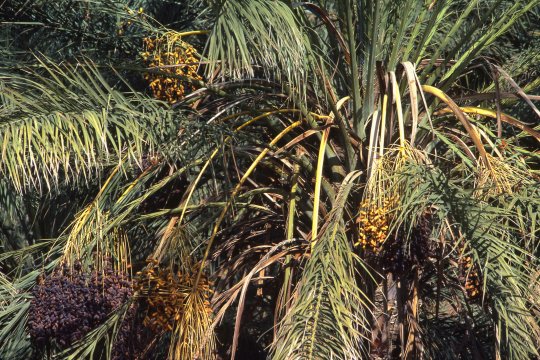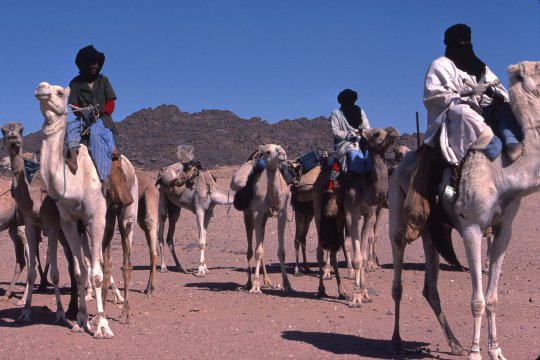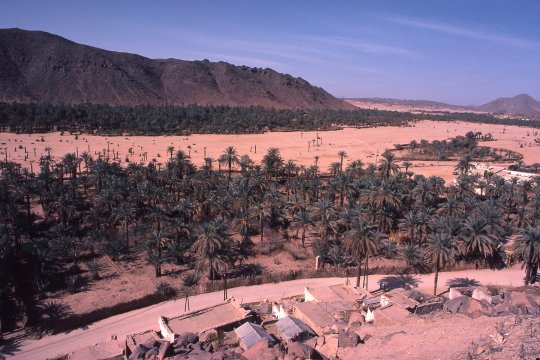|
John Tyman's Cultures in Context Series EGYPT and the SAHARA www.johntyman.com/sahara |
|
4.1 Introduction and Overview : 231-238 |
| . |
|
John Tyman's Cultures in Context Series EGYPT and the SAHARA www.johntyman.com/sahara |
|
4.1 Introduction and Overview : 231-238 |
| . |
 |
| .232. There are, in fact, three main ways in which people, traditionally, have survived here, and each of them has links to both the date palm and the camel. (Date palm at oasis near El Oued) |
 |
| .233. Some adopted a nomadic lifestyle, herding animals, and moving great distances in search of suitable pasture. (Tuareg herders near Tamanrasset) |
 |
| .234. Others, secondly, settled in oases, growing crops where water could be found at or near the surface. (Djanet) |
 |
| .236. Thirdly, there were those who lived in market towns and gained their income through trade -- buying and selling things produced by, or needed in, the surrounding area. (Date sellers at Biskra) |
![]()
Text and photos by John Tyman
unless otherwise indicated.
Intended for Educational Use
Only.
Contact Dr. John Tyman at johntyman2@gmail.com
for more information regarding
licensing.
![]()
www.hillmanweb.com
Photo processing, Web page layout,
formatting and hosting by
William
Hillman ~ Brandon, Manitoba ~ Canada